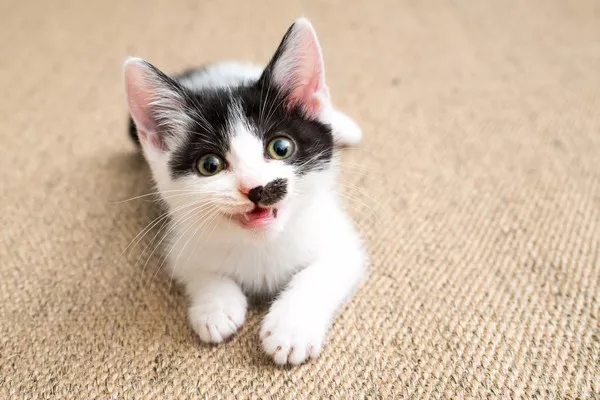The Lilac Point American Shorthair is a captivating variant of the American Shorthair breed, renowned for its stunning appearance and endearing personality. This breed showcases a unique color point pattern, with a delicate lilac hue accentuating the ears, face, paws, and tail. The American Shorthair, known for its robust health and easy-going nature, is a quintessential American cat, tracing its lineage back to the working cats brought over by early settlers. Lilac Point American Shorthairs retain the breed’s characteristic muscular build, round face, and expressive eyes, but their distinctive coloring sets them apart, making them highly sought after by cat enthusiasts.
Average Cost Range
The cost of a Lilac Point American Shorthair can vary widely, typically ranging from $800 to $2,000. Several factors influence this price range, including the cat’s age, pedigree, health status, and the reputation of the breeder. Kittens generally command higher prices than adult cats, especially if they come from a line of show-quality ancestors. Furthermore, the breeder’s reputation plays a significant role; breeders who have established themselves as reliable and ethical sources often charge more due to the quality and care they provide.
Price Influencing Factors
Age: Younger cats, particularly kittens, are more expensive due to their longer potential lifespan and the increased demand for youthful pets. Prices for kittens can range from $1,000 to $2,000, while older cats might cost between $800 and $1,200.
Pedigree: Cats with an impressive pedigree, especially those descended from championship lines, are more expensive. A detailed pedigree ensures that the cat meets specific breed standards, which is highly valued by breeders and buyers alike.
Health: The health of a Lilac Point American Shorthair is a crucial factor in determining its price. Cats that come with a clean bill of health, verified by recent veterinary checks and vaccinations, will cost more. Additionally, those tested for common genetic conditions specific to the breed will also be priced higher.
Breeder Reputation: Reputable breeders who adhere to ethical breeding practices, provide proper socialization, and ensure their cats are well cared for can charge premium prices. They offer a higher level of assurance regarding the cat’s health and temperament.
Initial Costs
Owning a Lilac Point American Shorthair involves several initial costs beyond the purchase price. These include:
Vaccinations: Initial vaccinations are crucial to prevent common feline diseases. The cost for the initial set of vaccinations is typically around $100 to $200.
Spaying/Neutering: If the cat hasn’t already been spayed or neutered by the breeder, this procedure can cost between $200 and $500.
Necessary Supplies: New cat owners need to purchase various supplies, such as a litter box, litter, food and water bowls, a scratching post, toys, and a bed. These initial supplies can cost approximately $200 to $300.
Microchipping: Microchipping your cat for identification purposes is a one-time cost of about $50.
In total, the initial costs for owning a Lilac Point American Shorthair can range from $1,350 to $3,050, depending on the specific circumstances and choices made by the owner.
See Also:Different Types of American Shorthair
Long-Term Costs
Owning a Lilac Point American Shorthair entails several ongoing expenses, including:
Food: High-quality cat food is essential for maintaining your cat’s health. Annual costs for food can range from $200 to $500, depending on the brand and dietary needs of the cat.
Litter: Litter is another recurring expense, costing between $150 and $300 per year.
Grooming: Although American Shorthairs have short fur that requires minimal grooming, occasional professional grooming or regular grooming supplies can cost around $50 to $100 annually.
Veterinary Care: Routine veterinary check-ups, vaccinations, and preventive care are essential for your cat’s health. Annual veterinary costs can range from $200 to $400, not including emergency care or treatment for illnesses.
Miscellaneous Supplies: Toys, replacement scratching posts, and other supplies can add another $50 to $100 to your yearly expenses.
Overall, the long-term costs of owning a Lilac Point American Shorthair can range from $650 to $1,400 annually.
Healthcare Considerations
While the American Shorthair is generally a healthy breed, there are a few common health issues to be aware of:
Hypertrophic Cardiomyopathy (HCM): This is a common heart condition in cats that can lead to heart failure if not managed properly. Regular veterinary check-ups are essential for early detection and management.
Obesity: American Shorthairs are prone to obesity if not properly managed. Maintaining a healthy diet and ensuring regular exercise can prevent this issue.
Dental Issues: Dental diseases can affect American Shorthairs, necessitating regular dental care, including brushing and professional cleanings.
Genetic Testing: Some breeders offer genetic testing for common hereditary conditions. While this adds to the initial cost, it can save on future medical expenses.
Medical costs for these conditions can vary, but having a savings plan or pet insurance can help manage these expenses.
See Also:How to breed american shorthair?
Insurance Options
Pet insurance can be a valuable investment for managing the unexpected costs of medical emergencies and illnesses. Several pet insurance plans are available, with premiums ranging from $20 to $50 per month depending on the coverage level. Pet insurance can cover a significant portion of veterinary bills, including surgeries, treatments, and medications, which can mitigate the financial burden of unexpected medical expenses.
Breeder Selection Tips
Choosing a reputable breeder is crucial to ensuring you get a healthy, well-socialized cat. Here are some tips:
Research: Look for breeders with positive reviews and testimonials. Reputable breeders will often be members of recognized cat breeding associations.
Visit the Breeder: If possible, visit the breeder’s facility to see the living conditions of the cats. A clean, well-maintained environment is a good sign.
Ask Questions: A good breeder will be happy to answer questions about their breeding practices, the health of their cats, and any genetic testing they perform.
Health Guarantees: Reputable breeders often provide health guarantees and will be transparent about any health issues in their breeding lines.
Red Flags: Be wary of breeders who have multiple litters available at once, do not allow visits, or have poor communication. These can be signs of unethical breeding practices.
Adoption as an Alternative
Adopting a Lilac Point American Shorthair from a shelter or rescue organization can be a more affordable option. Adoption fees typically range from $50 to $200, which often includes vaccinations and spaying/neutering. While finding a specific color point like lilac may be less common, adoption is a rewarding option that provides a home to a cat in need.
Conclusion
Owning a Lilac Point American Shorthair can be a rewarding experience, but it comes with various costs and responsibilities. From the initial purchase and setup costs to ongoing expenses for food, litter, and veterinary care, prospective owners should be prepared for the financial commitment. Understanding the factors that influence the price, such as age, pedigree, and breeder reputation, can help buyers make informed decisions. Additionally, considering pet insurance and thoroughly researching breeders can ensure a healthier, happier pet. For those looking to adopt, shelters and rescue organizations offer an alternative that can also significantly reduce initial costs. Regardless of the route taken, responsible pet ownership is paramount to ensuring the well-being and happiness of your Lilac Point American Shorthair.
Related Topics:





















